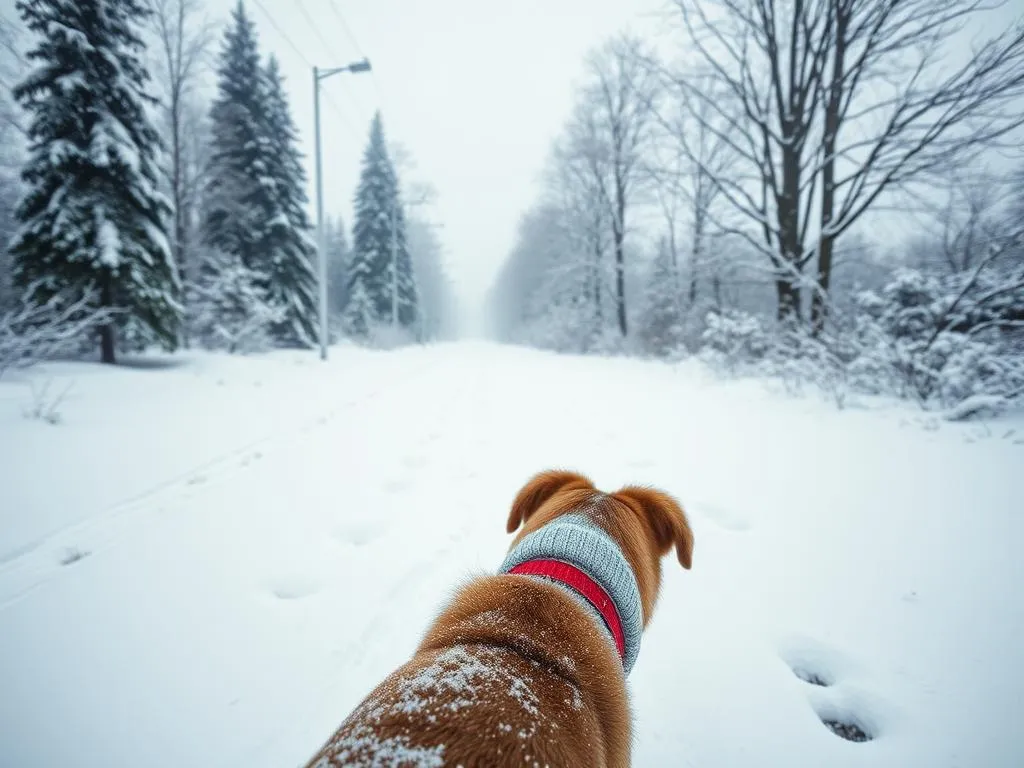
Walking your dog in the winter snow can be a delightful experience, but it also comes with its own set of challenges. Understanding how to effectively navigate these challenges is crucial for both you and your furry friend. Here’s a comprehensive guide to ensure that your winter walks are safe, enjoyable, and beneficial for your dog.
Understanding Your Dog’s Needs in Winter
Physical Health Considerations
When the temperature drops, it’s essential to consider how it affects your dog’s health. Cold weather can lead to discomfort, and some dogs may be more sensitive than others. Signs of discomfort include shivering, whining, or lifting their paws off the ground. If you notice any of these signs, it’s a good idea to cut the walk short and head back inside to warm up.
Breeds and Cold Tolerance
Different breeds have varying levels of tolerance to cold weather. For instance, Siberian Huskies, Alaskan Malamutes, and Saint Bernards are known for their ability to handle the cold. On the other hand, smaller breeds like Chihuahuas or Greyhounds may struggle in chilly conditions. Knowing your dog’s breed and its cold tolerance can help you make informed decisions about winter walks.
Preparing for Winter Walks
Essential Gear for You and Your Dog
Before heading out, ensure both you and your dog are appropriately dressed for the cold. Dog coats can provide extra warmth, especially for short-haired breeds. Consider investing in dog booties to protect their paws from the cold ground and ice. For yourself, wear insulated clothing, including waterproof boots and warm gloves, to keep comfortable throughout the walk.
Safety Equipment
It’s important to use appropriate leashes and harnesses during winter walks. Opt for sturdy leashes that provide better control in snowy conditions. Reflective gear is also essential, especially during the shorter daylight hours of winter. This ensures that both you and your dog are visible to others, providing an added layer of safety.
Pre-Walk Check
Before heading out, assess the weather conditions. If it’s extremely cold, consider adjusting your walk duration. Check your dog’s coat for any signs of matting or dampness, as a wet coat can lead to rapid heat loss. Don’t forget to inspect their paws for any signs of ice buildup or injury before you start your walk.
Tips for Walking Your Dog in the Snow
Finding the Right Path
Choosing the right walking path is essential during winter. Look for areas that are clear of ice and packed snow to minimize the risk of slipping. Parks and designated walking trails are usually well-maintained, which can make for a safer experience. Avoid sidewalks that might be treated with ice-melting chemicals, as these can be harmful to your dog’s paws.
Adjusting Walk Duration and Intensity
Cold weather may require adjustments to your regular walking routine. In frigid temperatures, even a short walk can be beneficial. Pay attention to your dog’s behavior; if they seem eager to return home, it’s a sign to cut your walk short. On warmer winter days, longer walks might be feasible. Always adapt to your dog’s energy levels and comfort.
Keeping Your Dog Warm
During walks, it’s crucial to manage your dog’s body temperature. Take breaks in sheltered areas to prevent them from getting too cold. If you notice your dog shivering or showing signs of discomfort, it’s time to head back home. Keeping an eye on their energy levels and behavior helps ensure they stay warm and happy throughout the walk.
Managing Your Dog’s Paws in Snow and Ice
Risks of Snow and Ice on Paws
Snow and ice can pose significant risks to your dog’s paws. Road salt and chemicals used for de-icing can cause irritation or burns on their pads. Additionally, ice can form balls between their toes, leading to discomfort and potential injuries if not addressed.
Protecting Your Dog’s Paws
Choosing the right paw protection is key to preventing injuries. Dog booties can provide excellent coverage against cold and sharp ice. If your dog is not used to wearing them, gradually introduce them to the idea. Another option is to apply a DIY paw wax made from natural ingredients, which can provide a protective barrier against the elements.
Post-Walk Paw Care
After your walk, it’s essential to clean your dog’s paws. Rinse off any salt or chemicals that may have accumulated and dry them thoroughly. Keep an eye out for any signs of injury, such as cuts or excessive redness, and consult a veterinarian if you notice any concerning symptoms.
Health Considerations During Winter Walks
Identifying Hypothermia and Frostbite
Hypothermia and frostbite are serious conditions that can affect dogs in cold weather. Symptoms of hypothermia include shivering, lethargy, and difficulty walking. If you notice these signs, it’s crucial to get your dog warm immediately. Frostbite usually affects the ears, paws, and tail, and signs include pale or gray skin, swelling, and blisters. If you suspect frostbite, seek veterinary care as soon as possible.
Staying Hydrated in Cold Weather
Even in winter, hydration is vital for your dog’s health. Cold weather can be deceptive, making it easy to overlook your dog’s need for water. Carry a portable water bowl and offer it to your dog during breaks. Ensure they are drinking enough, especially after exertion.
Behavioral Tips for Winter Walking
Training Your Dog for Winter Walks
Training your dog for winter walks involves teaching them commands that are particularly useful in snowy conditions. Commands like “stay,” “come,” and “leave it” can help manage your dog’s behavior around distractions like other dogs or wildlife. Socializing your dog with other dogs in winter can also help reduce anxiety and increase their comfort level when out in the cold.
Managing Energy Levels
Winter can lead to lower energy levels for both dogs and their owners. To manage your dog’s energy, engage them in indoor play before walks. Activities like fetch or tug-of-war can help burn off excess energy. Additionally, provide mental stimulation with puzzle toys to keep them occupied during particularly cold days when outdoor activities are limited.
Conclusion
Winter walks can be a wonderful way to bond with your dog while ensuring they get the exercise they need. By understanding your dog’s specific needs, preparing adequately, and taking necessary precautions, you can make winter walking a safe and enjoyable experience. Remember to be mindful of weather conditions, your dog’s comfort, and their health. Embrace the beauty of winter and enjoy those snowy adventures with your furry companion!









